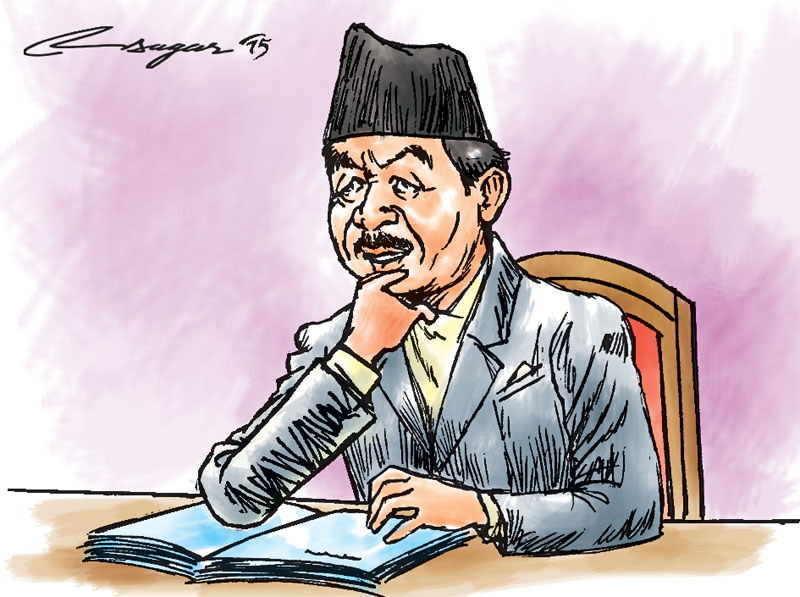Foreign direct investment
Although Nepal has one of the most liberal investment regimes in the region, it has lagged behind many other developing countries in attracting FDI. There is urgent need for projecting a positive image of the country to prospective foreign investors
Earthquake-affected economies cannot be considered as normal economies. The majority of them fall under the least-developed category and are saddled with relative small market size, severe economic constraints and weak institutions necessary for a well functioning economy. Economic impacts are witnessed through the damage or destruction to assets or ‘stocks’, arising from the earthquake itself, or from events in the aftermath of an earthquake.
In the household sector, the major loss is the damage to houses and apartments and building contents. In the business sector is damage to buildings, but most crucial was the loss of machinery and other productive capital. Physical infrastructure is often destroyed, including electricity, water, transport and access to land. Development aid alone cannot transform these earthquake-affected economies, and it is here that foreign direct investment (FDI) can be an instrumental tool to revitalize industries and rebuild infrastructures.
However, the impact of FDI varies with the ability of local stakeholders to take advantage of the potential benefits of FDI. In particular, the local regulatory framework has to provide for competitive conditions that are conducive to local entrepreneurship. Moreover, local individuals and firms need to have the ability to learn from foreign partners.
In Nepal the devastating earthquake of 25 April 2015, measuring 7.8 on the Richter scale, and the subsequent aftershocks led to economic and institutional devastation of vital infrastructure. According to National Planning Commission’s Post Disaster Needs Assessment, the earthquake is estimated to push an additional 2.5 to 3.5 per cent Nepalis into poverty in FY 2015-2016 with the total loss estimated at Rs. 706 billion. Prior to the earthquake, the situation was such that the country had only come out from a decade-long conflict and was laying the foundation for stability and growth. It was on track for MDGs targets and poverty level was taking a downward trend.
However, the earthquake has posed daunting challenges to the policymakers with the task of creating an integrated and comprehensive approach to post-earthquake reconstruction with a view to sustainable economic development. In attempting to meet these objectives, foreign direct investment (FDI) can complement internally generated revenue and foreign aid and generate added advantages, both tangible and intangible. FDI assists in creating employment opportunities, which are urgently needed to attain long-term economic stability.
Nepal has not been able to draw on the potential technological and other contributions that FDI can make to the process of development. In this respect, a healthy enabling environment for business is paramount. The country should focus on infrastructure investment which is critical for economic growth and welfare. Infrastructure investment has the potential for increasing efficiency and competitiveness, and to promote both international linkages and domestic integration. However, obtaining the required financing on adequate terms is often a challenge, reflecting in part issues pertaining to the returns to infrastructure investment, government finance constraints, and long gestation periods. Likewise, policymakers need also to pay due attention in minimizing risks through good governance and capable institutions, high absorptive capacity and an effective regulatory framework. Although infrastructure is an area in which foreign investors used to shy away from investing in the past due to various risks associated with such projects resulting from long gestation and pay back periods, in the present context of Nepal, seeking FDI has become imperative.
Although Nepal has one of the most liberal investment regimes in the region, it has lagged behind many other developing countries in attracting FDI. There is urgent need for projecting a positive image of the country to prospective foreign investors highlighting measures undertaken for strengthening the legal framework, lowering transaction cost and improving investment climate.
However, it should be noted that presently Nepal, affected by the great earthquake, is not an ideal location for foreign investors to undertake projects as there are destroyed infrastructure and serious disruptions in economic activities, resulting in falling production and GDP—all factors that deter FDI.
Nevertheless, the country can take steps to actively pursue FDI, and to benefit from its potential contributions to investment, employment, public finances, macroeconomic stability, infrastructure, business development and economic growth in general.
To conclude, for 2015/16, the country’s urgent priority is to rebuild in a better way the areas devastated by the earthquake. In this respect, more foreign direct investment is needed to sustain the growth momentum.
In this respect, the Budget of 2015/16 has stated that the Foreign Investment and Technology Transfer Act would be revised to attract foreign investment and that Investment Forum would be organized for encouraging more investment. Still, various investment obstacles and possible reform measures must be resolved and implemented soon.
Dr. Pant is Director at Nepal Rastra Bank.






